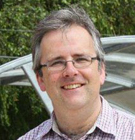The issue
CASTEP is a robust and powerful materials modelling code built upon quantum mechanics within the Density Functional Theory (DFT) formulation. CASTEP uses DFT to simulate the physical, chemical and electronic properties of new and existing materials.
The quantum mechanical accuracy of this approach allows many material and chemical properties to be predicted with no experimental input, providing insight into physical phenomena even under extreme conditions that cannot be replicated in a laboratory.
CASTEP has been widely used in the chemical, pharmaceutical, semiconductor, automotive and aerospatial industries. But for it to maintain its market-leading position, the code needs to continuously evolve.
The research
The research and development behind CASTEP began in 1999 with the formation of the CASTEP Developers’ Group (CDG), a core team of academics at universities in the UK. The first complete version of CASTEP was released in 2002, and there have been new releases annually since then. Each new release incorporates new scientific capabilities and calculation speed increases.
The research at York underpins the more advanced functionality of CASTEP, such as the calculation of the electronic band structure, the phonon dispersion and many experimentally important spectra such as:
- Nuclear Magnetic Resonance (NMR)
- Electron Paramagnetic Resonance (EPR)
- Electron Energy Loss Spectroscopy (EELS)
- Raman spectroscopy
The York team has developed new algorithms and functionality, including spin-orbit coupling, advanced many-body van der Waals modelling and electron-phonon coupling. The team has also made significant technical developments including hybrid OpenMP-MPI parallelism and porting to ARM, GPU and Intel MIC architectures.
The outcome
CASTEP is licensed to the software company BIOVIA for sales to industry. It has been purchased by approximately 1,000 companies. Commercial applications include:
- designing new battery materials to improve the performance of electric cars (Toyota)
- developing organic electronic materials for light-weight flexible displays (Sony)
- finding new catalysts for hydrogen-powered fuel cells (Johnson-Matthey).
CASTEP has generated worldwide commercial sales of $3m a year since 2013, despite competition from other commercial codes and free open-source alternatives. This success is based on continued innovations in the code, its new functionality, the implementation of new algorithms and better performance overall. Researchers at York continue to make substantial contributions to CASTEP, with an ever-growing number of projects.


